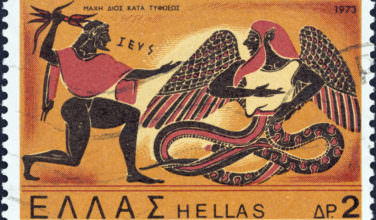About Horae – Goddesses of the Seasons
Comments Off on About Horae – Goddesses of the Seasons
 In Greek mythology, items of nature were usually personified in the form of a god or goddess. Among the most important of these beings were the Horae, a group of goddesses who ordered the seasons and natural time. As time progressed, the Greeks came to associate the Horae not only with natural phenomenon, but with justice and good order as well.
In Greek mythology, items of nature were usually personified in the form of a god or goddess. Among the most important of these beings were the Horae, a group of goddesses who ordered the seasons and natural time. As time progressed, the Greeks came to associate the Horae not only with natural phenomenon, but with justice and good order as well.
To completely understand the Horae, it is necessary to analyze their function, with particular emphasis on how they served the Olympic gods and managed the natural world. Here’s more information about them:
Early Lives of the Horae
While the origins of the Horae differ according to source, most accounts put Zeus, the head of the Olympic Pantheon, as their father and Themis, the Titaness of justice, as their mother. Traditionally, the Horae appear in triads. The earliest Horae triad featured Thallo, Auxo, and Carpo, who looked after the natural order of the world. A later triad was composed of Eunomia, Dike, and Eirene. These three goddesses looked after justice and lawful order.
While the two original triads are the most well-known groups of Horae, many other Horae are also named in Greek myths. A third triad of Pherusa, Euporie, and Orthosie presided over agriculture. Meanwhile, a group of four Horae personified the four seasons and others oversaw the hours of the day.
Different Triands of the Horae
The first and most recognizable of the Horae triads saw Thallo, Auxo, and Carpo presiding over the times of growth of the natural world. In this era of Greek history, the year was divided among only three seasons. Thallo was the goddess of spring, Auxo was the personification of summer, and Carpo oversaw autumn. In addition to overseeing the seasons of the natural world, this triad also guarded Mount Olympus and was worshipped with much intensity by farmers.
The second triad of Eunomia, Dike, and Eirene followed their mother Themis’s example of caring for justice and law. Eunomia guided laws and legislation, Dike looked after moral justice, and Eirene oversaw peace and prosperity. Together, Eunomia, Dike, and Eirene created a stable and fair world for mortals. Cults dedicated to the worship of these three goddesses were found in many places, with Athens, Olympia, and Argos boasting the largest shrines.
Horae of the Four Seasons
In the epic poem Dionysiaca by Nonnus, a group of four Horae are said to preside over the changing of the seasons. Nonnus tells that these goddesses are the daughters of the Sun god Helios and Selene, the goddess of the Moon. In addition to serving as the personification of the seasons, these four goddesses also guide Helios’s chariot on its journey across the sky.
The names of these four goddesses are Eiar, the goddess of spring, Theros, the goddess of summer, Phthinoporon, the goddess of autumn, and Kheimon, the goddess of winter. In their artistic depictions, these four goddesses bear objects associated with their seasons. Eiar, for example, wears a crown of flowers and stands by a budding tree, while Phthinoporon holds grapes and a basket of fruit.
In understanding the Horae, one can better understand the cosmology of the world of ancient Greece. In Greek thinking, the times of the year were managed by benevolent goddesses dedicated to serving Mount Olympus. Additionally, Greek civilization was shepherded by these goddesses, who not only made an orderly society, but were also the personifications of law and order.
Source:
Categorized in: Greek Mythology
This post was written by Greek Boston




